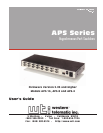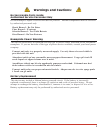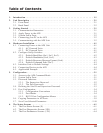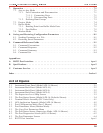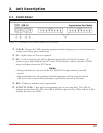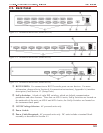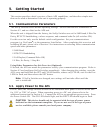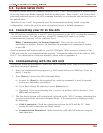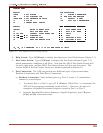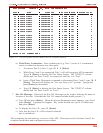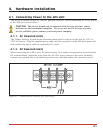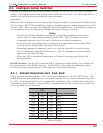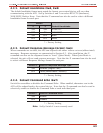
1. Introduction
WTI’s APS-16, APS-8, and APS-4 Asynchronous Port Switches allow reliable, high-speed
connections between PCs, modems, and other devices using dissimilar baud rates, parity, and
flow control. The APS supports communication at speeds up to 115.2 Kbps, and features full
RTS/CTS hardware handshaking. Lightening-swift data throughput and full flow control make
the APS the perfect data switch for today’s high speed communications applications.
Versatile Connectivity
Up to 16 different devices can be connected to the APS without the need to select a common
baud rate or parity. Each port can be individually configured for specific baud rates, parity,
handshaking, and various other parameters and options.
Easy Set-Up and Operation
Configuration of the APS is simple. A menuing system is used to select communications
parameters, and enable or disable options. The APS can easily adapt to the requirements of
almost any data communications application.
Limited Command Access
The APS is ideal for situations that require limited access to important commands. Two
security levels allow each port to function as a Supervisor Port or User Port, depending on the
password entered at login. Supervisor Ports are allowed to change configuration, display
status, and connect to any other port; User Ports are only allowed to connect to the ports
provided by their password. Each individual port can be assigned its own unique, user-defined
password, up to sixteen characters long.
Password Protected Connection and Command Access
The convenient password feature provides restricted access to command functions, and also
restricts unauthorized connection to specific ports. Each individual port can be assigned its
own unique, user-defined password, up to sixteen characters long.
Non-Volatile Memory
If power to the unit is lost or interrupted, the APS’s non-volatile memory will retain user-
defined parameters and port connections.
Modem Communication
The APS can be controlled by a local PC that communicates with the unit via cable, or
controlled remotely via external modem. ProComm
(or another communications program) is
used to send commands to connect ports or display status.
Configuration Backup
Once you have configured the APS to fit your application, parameters and options can be saved
to an ASCII text file on your PC. This allows you to quickly restore user-selected parameters
if the unit configuration is accidentally altered or deleted. Saved parameters can also be
uploaded to other APS units. This allows rapid set-up when several units will be configured
with identical or similar parameters.
1-1



